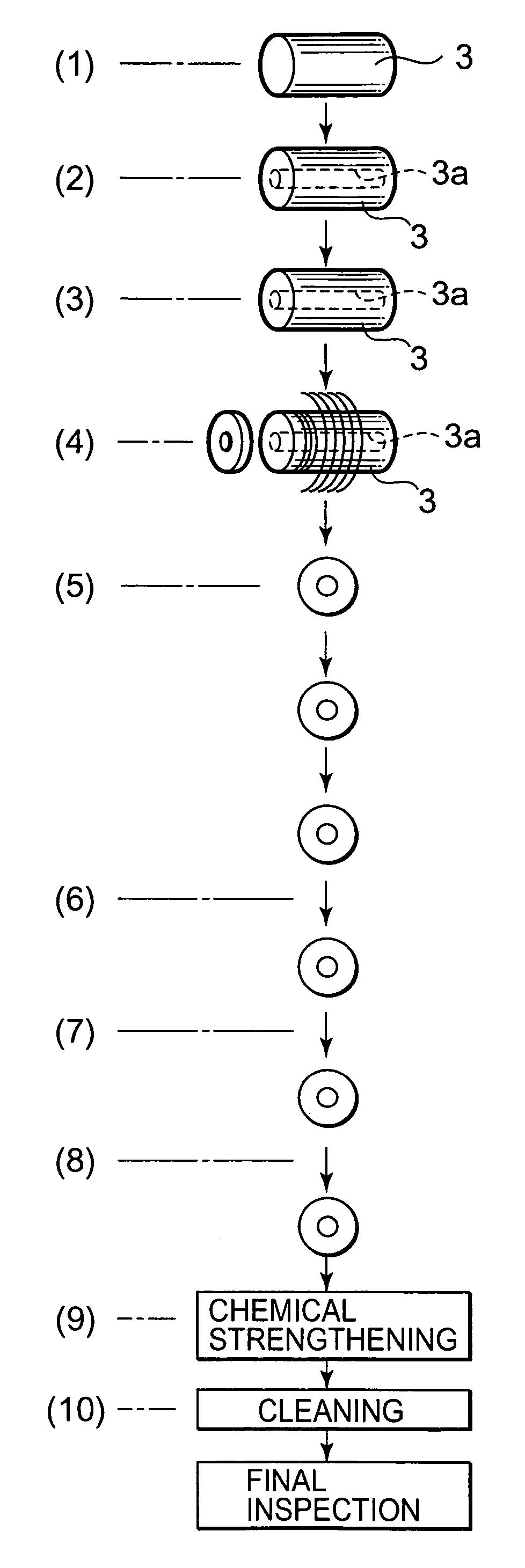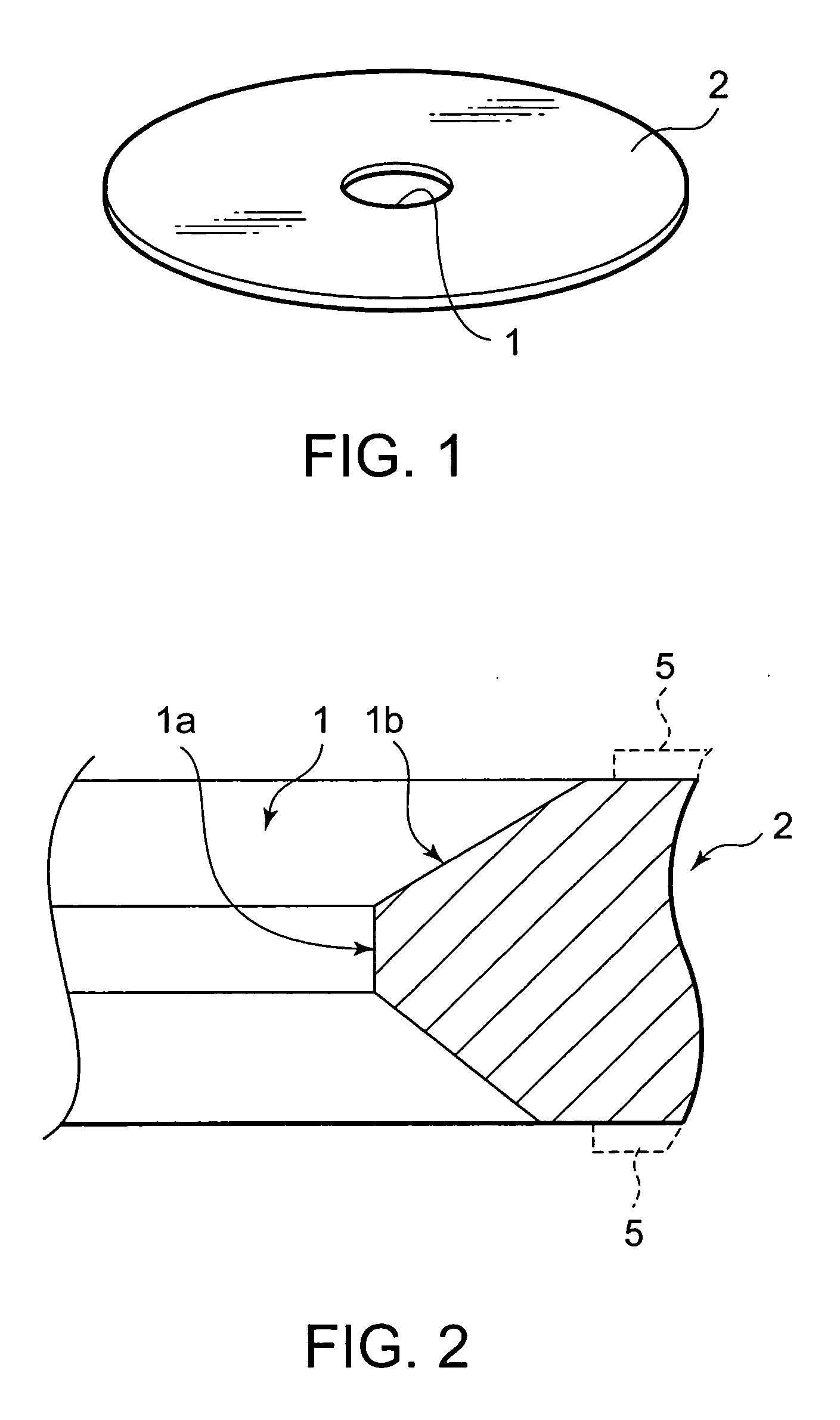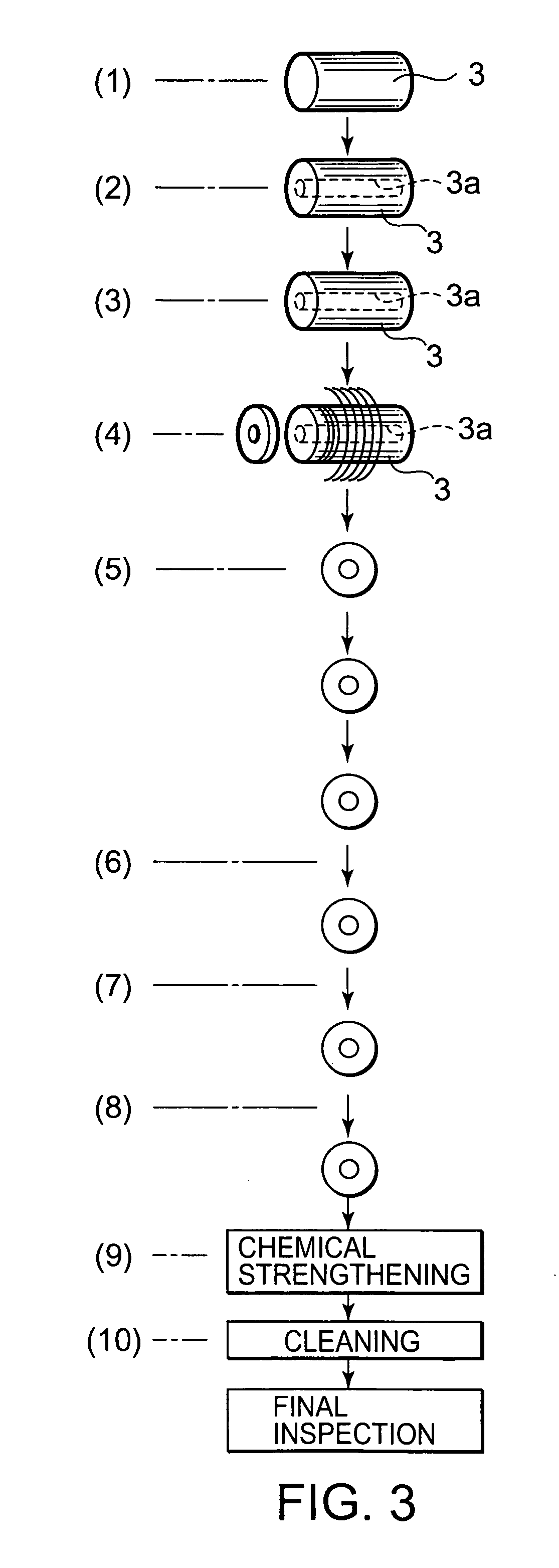Method of producing a glass substrate for a magnetic disk, Method of producing a magnetic disk, and a cylindrical glass material for a glass substrate
- Summary
- Abstract
- Description
- Claims
- Application Information
AI Technical Summary
Benefits of technology
Problems solved by technology
Method used
Image
Examples
examples
[0140] Hereinafter, examples of this invention will be described in detail.
first example
[0141] In a first example, a glass substrate for a magnetic disk was prepared through following steps.
[0142] (1) Step of Obtaining a Cylindrical Glass Material
[0143] In this example, a glass material comprising an aluminosilicate glass was prepared.
[0144] The glass material had a diameter of 28.6 mm.
[0145] (2) Step of Forming a Center Hole in the Glass Material.
[0146] Next, a center hole was formed along a center axis of the glass material. The center hole had an inner diameter of 5.9 mm.
[0147] (3) Step of Polishing (Mirror-Finishing) Inner and Outer Side Surfaces of the Glass Material
[0148] An outer side surface of the glass material was mirror-polished by a brushing method using a polishing brush. At this time, a slurry (free abrasive grains) containing cerium oxide abrasive grains was used as abrasive grains.
[0149] Next, an inner side surface (inside the center hole) was mirror-polished by the brushing method using a polishing brush. Upon polishing the inner side surface ...
second example
[0180] In a second example, a glass substrate for a magnetic disk was prepared through following steps.
[0181] (1) Step of Obtaining a Cylindrical Glass Material
[0182] In this example, a glass material comprising a crystallized glass was prepared.
[0183] The glass material had a diameter of 28.6 mm.
[0184] (2) Step of Forming a Center Hole in the Glass Material.
[0185] Next, a center hole was formed along a center axis of the glass material. The center hole had an inner diameter of 5.9 mm.
[0186] (3) Step of Polishing (mirror-Finishing) Inner and Outer Side Surfaces of the Glass Material
[0187] An outer side surface of the glass material was mirror-polished by a brushing method using a polishing brush. At this time, a slurry (free abrasive grains) containing cerium oxide abrasive grains was used as abrasive grains.
[0188] Next, an inner side surface (inside the center hole) was mirror-polished by the brushing method using a polishing brush. Upon polishing the inner side surface of ...
PUM
| Property | Measurement | Unit |
|---|---|---|
| Diameter | aaaaa | aaaaa |
| Length | aaaaa | aaaaa |
| Length | aaaaa | aaaaa |
Abstract
Description
Claims
Application Information
 Login to View More
Login to View More - R&D
- Intellectual Property
- Life Sciences
- Materials
- Tech Scout
- Unparalleled Data Quality
- Higher Quality Content
- 60% Fewer Hallucinations
Browse by: Latest US Patents, China's latest patents, Technical Efficacy Thesaurus, Application Domain, Technology Topic, Popular Technical Reports.
© 2025 PatSnap. All rights reserved.Legal|Privacy policy|Modern Slavery Act Transparency Statement|Sitemap|About US| Contact US: help@patsnap.com



